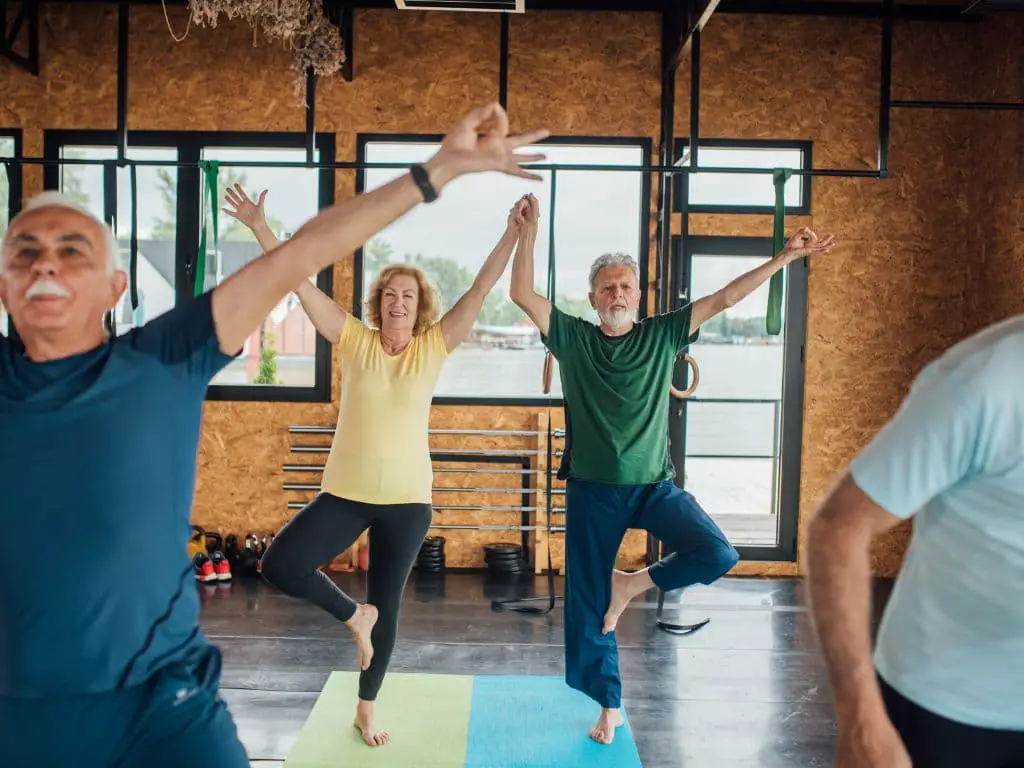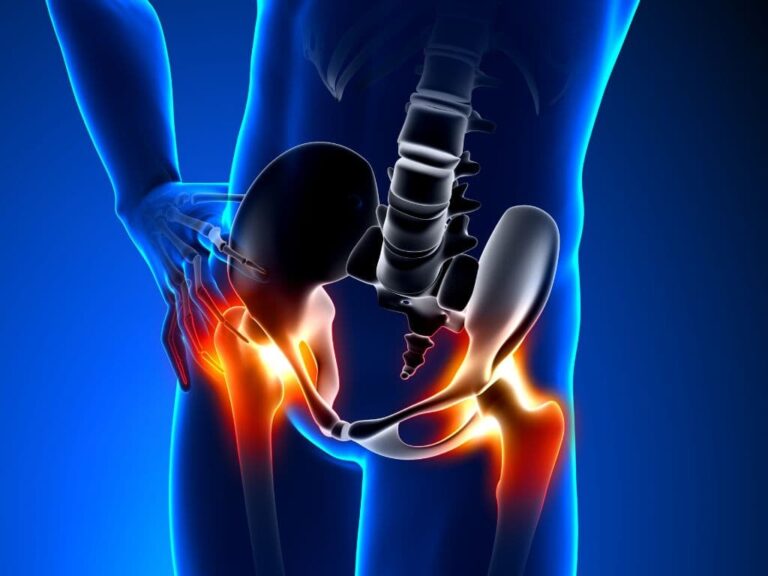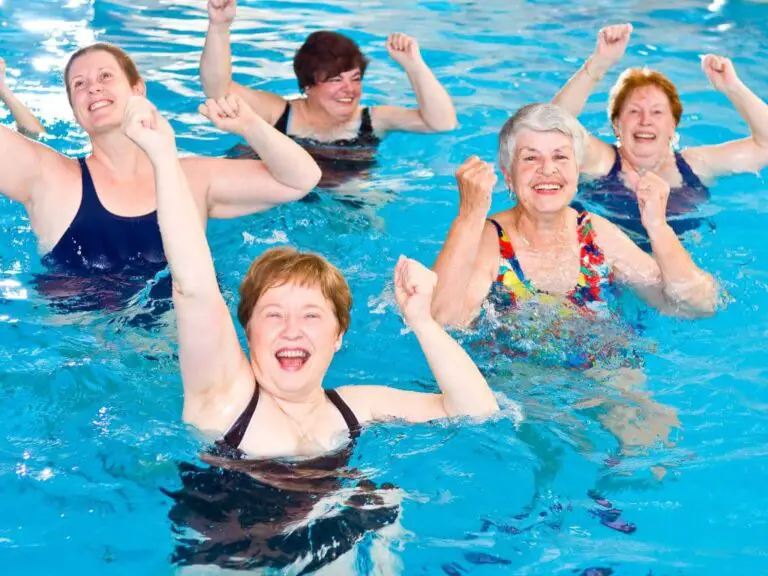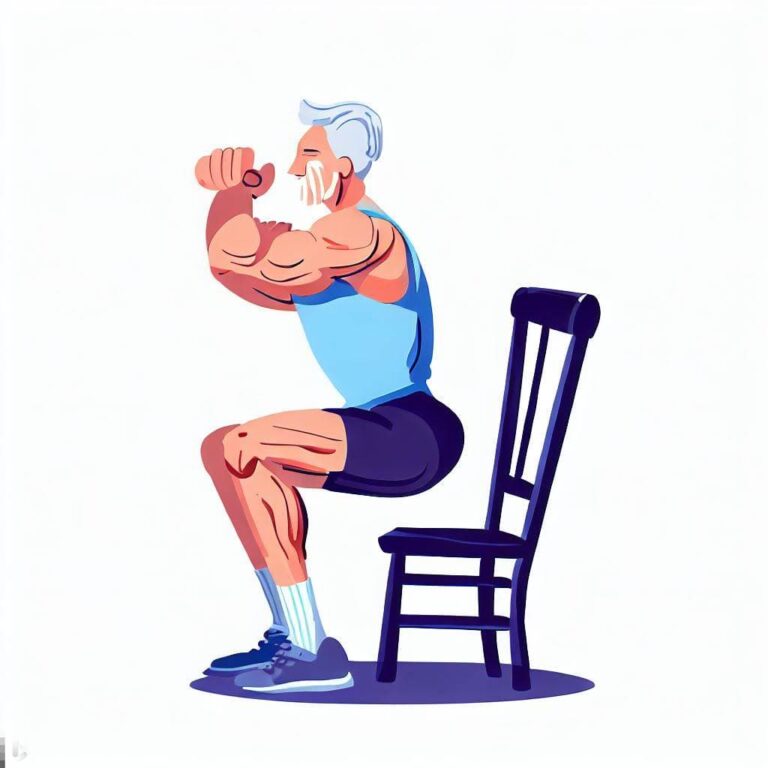Is 30 Minutes of Yoga a Day Enough for Seniors?
Yoga has become an increasingly popular activity among seniors in recent years. The mind-body practice emphasizes breath control, strength, flexibility and balance through a series of poses and sequences.
For the elderly population, yoga can provide numerous health benefits including improved balance, strength, flexibility, pain relief, better sleep and stress reduction. Finding the right balance between rest and physical activity is key for seniors to maintain their health as they age.
Is 30 minutes of yoga a day enough for seniors? Yes, a daily 30-minute yoga practice can provide ample exercise for seniors, particularly those who are new to yoga or have low mobility. Though considered a good starting point, the appropriate duration for yoga can vary depending on factors such as the senior’s health, fitness level, the type of yoga being practiced, and the intensity of the poses.
As fitness levels improve, yoga experts often recommend gradually increasing the session length to 45-60 minutes for better musculoskeletal strengthening, aerobic conditioning, balance and coordination.

This article explores whether a daily 30-minute yoga practice provides adequate exercise for seniors, or if more time should be dedicated to yoga.
The Importance of Yoga for Seniors
Yoga is often recommended by doctors and health experts as an excellent activity for the senior demographic due to its immense benefits:
- Mind-Body Connection: Yoga emphasizes awareness and control of breath, which helps create harmony between the mind and body. This can provide focus and mental clarity.
- Stress Relief: The slow, mindful movements and meditation involved in yoga can lower stress hormones and promote relaxation. This is especially beneficial as chronic stress can impact health problems.
- Pain Relief: Yoga improves flexibility and strength which can help reduce joint and back pain. Gentle poses also aid pain management.
- Improved Sleep: Yoga sequences that focus on winding the body down can help initiate sleep. The relaxation also improves sleep quality.
- Reduced Risk of Chronic Diseases: Regular yoga practice reduces inflammation in the body which is linked to many age-related chronic illnesses like heart disease, diabetes and arthritis.
The American College of Sports Medicine (ACSM) and the National Institutes of Health (NIH) both recommend yoga as a safe, low-impact activity with proven health advantages for seniors.
Understanding Different Types of Yoga
There are numerous yoga styles, each offering unique benefits. Being aware of the various types can help seniors determine which form of yoga suits their needs and fitness level.
Hatha Yoga for Beginners
Hatha yoga focuses on basic asanas (postures) and breathing techniques, making it gentle and a good starting point for beginners. The slow pace and posture variations prevent strain.
Vinyasa Yoga for Strength
Vinyasa yoga involves flowing smoothly between poses, providing a cardio-based workout. The active sequences build strength, balance and flexibility.
Iyengar Yoga for Flexibility
Iyengar yoga utilizes props like blocks and straps to help align the body properly into poses. The emphasis on correct posture increases flexibility.
Water Yoga for Low-Impact Exercise
Water yoga is done in a warm pool, using the water’s buoyancy to take pressure off the joints. It gently improves strength and balance.
Yin Yoga for Deep Stretch
Yin yoga postures are held for longer periods to target connective tissues and increase mobility. It’s ideal for deep stretching and joint health.
Restorative Yoga for Stress Relief
Restorative yoga uses props to support the body in passive poses. The restful poses induce deep relaxation and reduce stress.
Chair Yoga, a Safe Option for the Elderly
Chair yoga modifies poses so they can be done sitting down for stability. It improves flexibility without strain or pressure on the joints.
A Special Mention: Yoga for Arthritis and Osteoporosis
Specific yoga programs can aid seniors suffering from common age-related conditions like arthritis and osteoporosis. The gentle movements assist in pain management and prevent bone loss.
Assessing the Suitability of 30 Minutes of Yoga for Seniors
The appropriate yoga duration for a senior depends on several factors:
- Health and Fitness Level: Those new to yoga or with low mobility may benefit from 30 minute sessions to start. Seniors who are active and have practiced yoga can often sustain one hour.
- Type of Yoga: Gentler styles like hatha and yin yoga involve slower pacing so 30 minutes is sufficient. More vigorous forms like vinyasa may require longer sessions.
- Intensity: 30 minutes is likely adequate for basic beginner level yoga but those doing advanced or power yoga may need 45-60 minutes.
Starting with 30 minutes can help seniors adjust to the yoga practice. But incrementally increasing session duration and intensity allows greater strengthening and flexibility benefits.
30 Minutes of Yoga: A Starting Point for Elderly
For most older adults who are new to yoga, beginning with a daily 30-minute session is recommended. This provides a short but impactful bout of mind-body exercise. As the yoga practice develops, seniors can work towards gradually increasing session time for enhanced effects. Other key points include:
- 30 minutes allows seniors to learn proper alignment and breathing techniques without overexerting themselves initially. Proper form prevents injury.
- Yoga sequences can be designed specifically for needs – strength, balance, flexibility or relaxation.
- Seniors may supplement yoga with other moderate exercises like walking, water aerobics or tai chi to improve endurance.
- Breathwork, meditation and savasana (rest pose) are parts of yoga that do not require physical strength but provide mental benefits. These can be integrated into 30-minute routines.
Starting with 30 minutes establishes a sustainable yoga habit but progression in duration and intensity should align with the senior’s improving fitness levels for maximum benefits.
Consulting the Experts: When is it Time to Increase Yoga Duration?
While 30 minutes provides an introduction to yoga, most experts recommend gradually building up to 45-60 minutes for better musculoskeletal strengthening, aerobic conditioning, balance and coordination. Factors to consider when increasing session length include:
- Speaking to a doctor, especially if the senior has health conditions, before making changes.
- Discussing readiness for longer duration with a certified yoga instructor experienced in working with seniors. They can provide guidance to progress safely.
- Increasing session time by 5-10 minutes incrementally, not all at once. This allows the body to adjust without strain.
- Adding time once existing regimen feels comfortable – usually after 2-4 weeks of consistent practice.
- Balancing longer yoga time with days of gentle restorative yoga and meditation.
With mindful progression customized to individual needs, seniors can safely build the intensity, duration and frequency of yoga practice to maximize benefits.
Conclusion: Embracing Yoga in Senior Years
In summary, yoga offers numerous perks like improved strength, balance, flexibility, pain relief and stress reduction for the elderly. The slow, gentle nature makes it accessible to most seniors. While 30 minutes daily provides an introduction to yoga, building gradually towards 45-60 minutes under guidance yields greater benefits. The ideal duration depends on the individual’s health status and type of yoga. Regular practice aids healthy aging, so yoga serves as an impactful exercise seniors should embrace. With a doctor’s input and basic precautions, seniors can craft a yoga routine to suit their needs and abilities.
Frequently Asked Questions
-
Is 30 minutes of yoga a day enough exercise?
Even 30 minutes of yoga per day is enough to transform unhealthy lifestyle habits into life-altering practices in just a few days. Yoga does not have to be a hard workout, unlike other traditional exercises. Clearness and good breathing are key to many yogic principles.
-
Which part of your body is an example of formal balance?
Symmetrical or formal balance is the simplest type. Symmetrically balanced items are the same on all sides. Formal balance is illustrated by our bodies. You will find that your bodies are almost equal if you draw a line between your head and your toes, dividing them in half.
-
Why do elderly lose their balance?
The vestibular system is located inside the inner ear. It helps us to perceive balance. The vestibular system is connected to the brain and sends a signal to our bodies when we’re about to fall. This allows us to direct the body to corrective actions. The vestibular system’s cells age and become less effective in correcting our situation.
-
What is radial balance?
Radial balance refers to symmetry that is consistent in multiple directions. The central point of the composition is where visual elements are placed, such as the spokes on the bicycle wheel. Radially balanced designs tend to be circular. Radial balance can also be achieved with other shapes, such as squares and hexagons.
-
What are the principles of balance?
Principles of Design describe how artists combine elements into art to create a piece of work. The distribution of visual weights of colors, textures, space, and objects is called balance. These elements must be balanced if the design is a scale.
-
Why do older adults lose their balance?
The vestibular system is located inside the inner ear. It helps us to perceive balance. The vestibular system is connected to the brain and sends a signal to our bodies when we’re about to fall. This allows us to direct the body to corrective actions. The vestibular system’s cells age and become less effective in correcting our situation.
-
What causes weak legs and loss of balance?
Peripheral neuropathy The nerves that are not connected to your spinal cord and brain can be damaged. This is known as peripheral neuropathy. Peripheral neuropathy can cause weakness, numbness and pain, as well as balance problems. This is because your body cannot be compared to the ground or other objects.
-
Does B12 help with balance?
Inadequate coordination. A B12 deficiency can cause ataxia (or impaired balance and coordination). B12 deficiencies can lead to difficulty in walking or balancing.
-
When you lose your balance and drop to the floor?
If a person is suffering from a brain condition or inner ear problem, they might experience loss of balance or spinning sensations. There are many reasons why balance may be lost, such as ear infections or head injuries, medications, neurological disorders, and medication.
-
Which fruit is high in vitamin D?
Fortified soy products such as tofu and soy milk are high in vitamin D. Currently, there are no high-quality fruits, so fortified orange juice, the only product that contains vitamin D is available.






